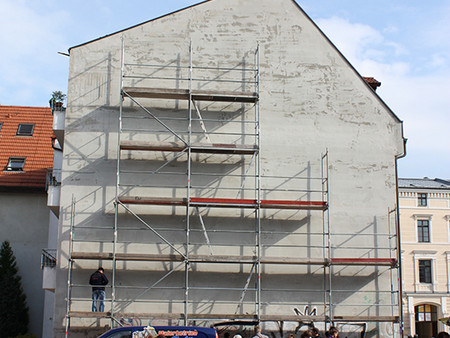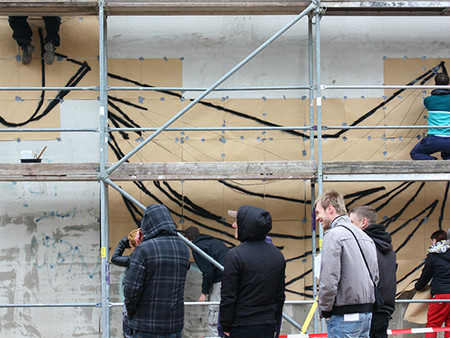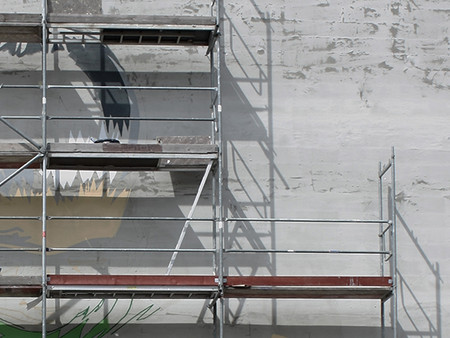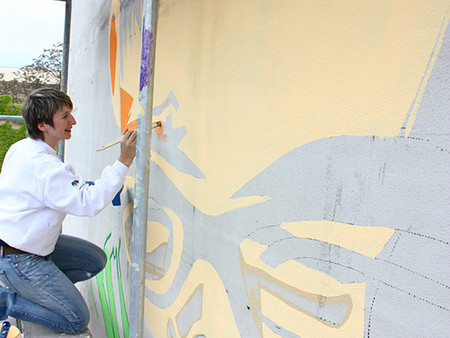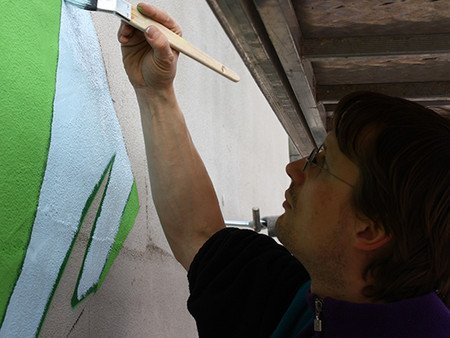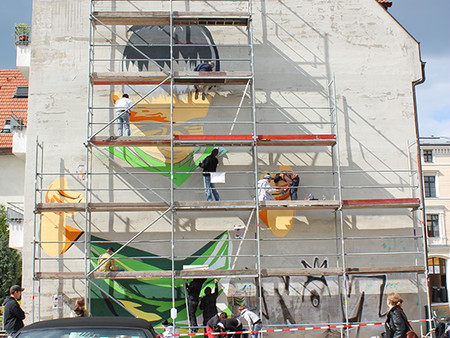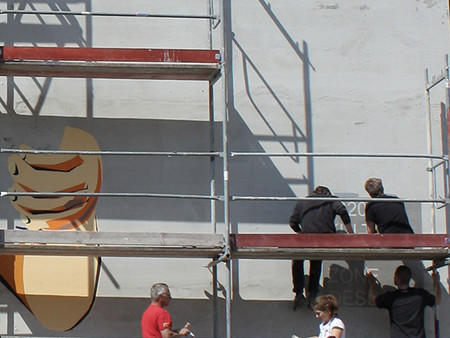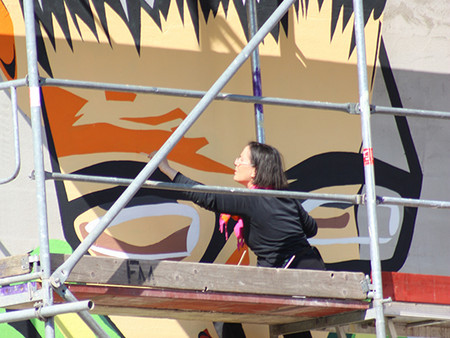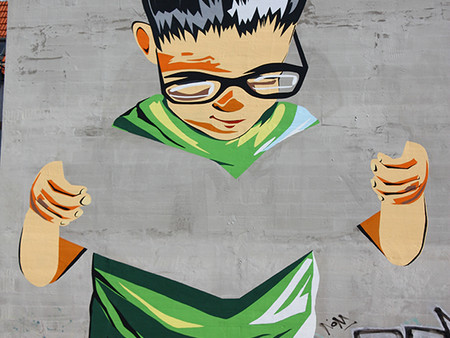Work in Progress
A Mural against Cultural Downsizing
Paint and experts for a student project in Dessau – sponsored by Caparol
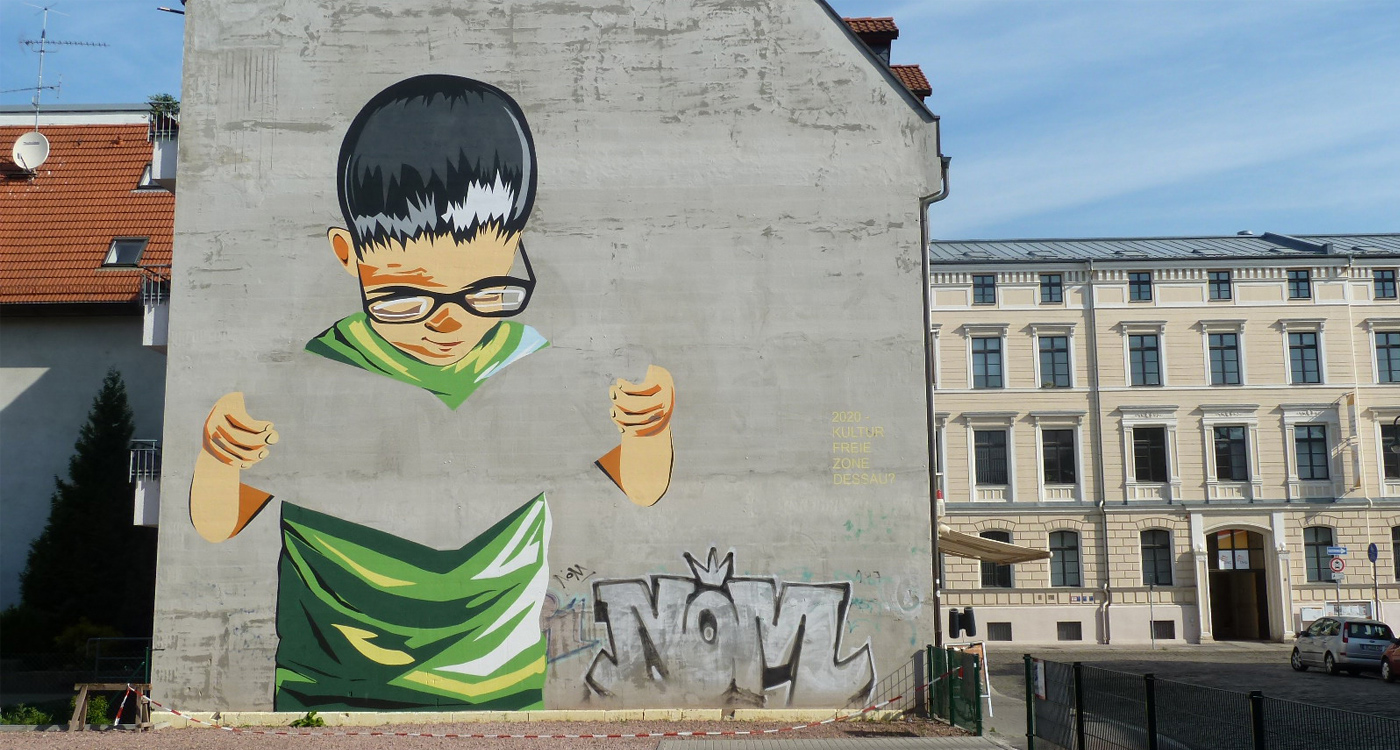
The mural on Johannisstrasse is intended to stimulate discussion and reflection. The boy's gaze is intense, an impression that is intensified by the strong glasses. He is no longer reading in this world, but has moved far away from it, into a world that is only accessible to the reader.
The mural on the gable wall of the Heidenreich Opticians, is dominated by yellow and green shades and measures eight to nine metres. It is a term project by design student Arlett Streich, with which she participated in the "Culture finds City" project of her professor, Lisa M. Stybor.
Last year, the professor and the students designed various murals, all of which have one objective: to point out the impending reduction in subsidies for the Anhaltisches Theater in Dessau as well as for libraries, museums, open-air swimming pools, and sports clubs. Stybor asked the Caparol Group for support for this project in April 2010. She got it promptly - in the form of about 75 litres of Muresko façade paint and two energetic employees: Beate Ripka from the Caparol ColorDesignStudio in Ober-Ramstadt and intern Johannes Eulberg travelled to Dessau-Roßlau for several days in May and helped the small group of about eight to ten students and Professor Stybor on site to transfer the picture of the boy with the missing book to the twelve-metre-high untreated concrete facade. Furthermore, the Kuhn scaffolding company and the Schoenau painter's business could be won as sponsors for this project.
The actual implementation of the design took two days and went quite smoothly: The students transferred the blueprint to the building facade. Then it was time to colour it in: Beate Ripka together with the local Caparol sales representative, Torsten Walther, had previously obtained the paint from a wholesaler and mixed the various shades using the tinting machine. The Schönau painting business from Dessau donated brushes and buckets and sent one of its employees to help on the scaffolding, so that together with Ripka and Eulberg three experts supported the students. "Professionals without whom we would probably still be painting now," Stybor said in her speech at the project's closing ceremony.
Planning and implementation was a complete success for all those involved and makes it clear that the commitment for art and culture is always worthwhile.
Link to the stop-motion film:
m.youtube.com/watch





